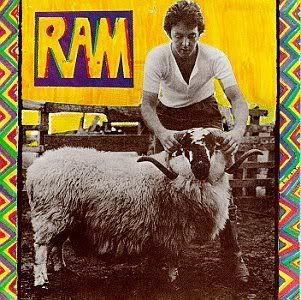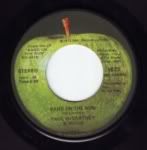Post by KittyKat - RIP Luciano on Oct 1, 2003 12:51:28 GMT -5
Well here it is - hope you enjoy 
Main Course by the Bee Gees 1975
Main Course was a gamble. But it paid off. So much so, that it is likely the best studio album from the Bee Gees. It reflects the amount of time they spent updating their sound to the styles of pop music at that time without sounding like a copy. Better yet, it inspired artists to want to copy them! It is also the seminal album of their 1970's career. Nearly all their work that followed up to 1981 originates with these compositions.
There undoubtedly would have been a disco revolution without The Bee Gees. What made them different, and still differentiates their music today, is the melodic way in which the Brothers Gibb were able to make the world dance. Main Course was the album that helped shape what they would create for Saturday Night Fever.
The Bee Gees, were looking for a new direction after 1972. While they had some big sellers in the U.S. in 1970-71 (Lonely Days, How Can You Mend A Broken Heart), it seemed that the sounds of pop music were changing, leaving them behind. But what kind of sound could they capture that would put them back on the charts again? It wasn't readily apparent: they made two albums between 1972 and 1974 before Main Course. During that time, they tried different styles and musical approaches and began a relationship with producer Arif Mardin who made the group stretch, introducing driving rhythms, new harmonies and an appreciation for overlaying synths, horns and strings without dragging the sound down. This redesigning culminated in Main Course, released in the Spring of 1975.
The album featured one bona fide world smash in Jive Talkin’ , several other hits and a host of material that Bee Gees fans to this day consider to be among their strongest work. There's a new kind of beat and rhythm by the group, more of a funky, driving kind of beat on many of the tracks that’s not quite disco. This style would advance onto their next albums, as would the updated pop-ballad sounds.
THE TRACKS
Nights On Broadway – A song that enjoyed a huge amount of radio play in the 1970s and is sadly lost to most tight formats now. This first cut is punctuated by Barry Gibb’s falsetto counterpoint on the chorus, a sound that would literally become synonymous with the group’s name. Blue Weaver pumps his keyboards for all they are worth in this cut, the harmonies are fast but tight, and there is a terrific bridge that slows the entire song before winding it all back into a frenzy. In my top 5 list of Bee Gees songs.
Jive Talkin’ – A precursor of what disco was becoming. Barry Gibb said in a VH1 Storytellers episode that they lifted the rhythm from the sound their car tires made while crossing a bridge on the way to Criteria Studios in Miami. Fantastic guitar work is the watchword here. Maurice and Barry rock the house! This may be one of the best-produced songs of the 1970s.
Wind Of Change - This is the disco sound as it was meant to be. Horns and strings swirl vocals that soar. One of the first disco songs to employ orchestral arrangement which would become a staple for disco in the latter part of the decade.
Songbird – A simple but tender Gibb ballad that’s more like their previous work. My mom used to be fond of singing this to me when I was sad.
Fanny (Be Tender With My Love) - Ballad or dance tune? Who cares, it’s delightful. As in Nights on Broadway, the falsetto counterpoint and shifting tempo make this song very special. And the harmonies? Absolutely divine. I defy anyone not to sing along at the end during the repeated chorus.
All This Making Love – A very McCartney-ish tune. A staccato piano, twisted vocals (complete with “tiger” roars) and the trademark harmonies are all here. This was really the last of the novelty or silly songs that the Bee Gees put out.
Country Lanes - Robin Gibb’s quaver can either be exceptionally cool or exceptionally annoying to listen to. A great example of it is his cover of The Beatles’ Oh! Darling. Here, Robin’s vocal performance kind of suffers from the strange phrasing and tempo of the song. Definitely the weakest track on the album for me, but still relatively good.
Come On Over - This song was really popularized by Olivia Newton-John’s cover version, but the Gibbs do some of the best twanging of their career on this cut. Nashville has always been ambivalent about them, but they sure do write pretty country. A sweet little piano and some great harmonies are found on this track.
Edge Of The Universe – A bizarre psychedelic sounding tune. Everything works, but the song is kind of out of context on this album. Where this song really works is the live version of it on the album Here At Last…Live.
Baby As You Turn Away - As much as I love Barry’s falsetto, I’ve always thought that this song would’ve been better if it had been sung in a natural register. But it’s still a likeable tune and it’s a nice ending to a wonderful album.

Main Course by the Bee Gees 1975
Main Course was a gamble. But it paid off. So much so, that it is likely the best studio album from the Bee Gees. It reflects the amount of time they spent updating their sound to the styles of pop music at that time without sounding like a copy. Better yet, it inspired artists to want to copy them! It is also the seminal album of their 1970's career. Nearly all their work that followed up to 1981 originates with these compositions.
There undoubtedly would have been a disco revolution without The Bee Gees. What made them different, and still differentiates their music today, is the melodic way in which the Brothers Gibb were able to make the world dance. Main Course was the album that helped shape what they would create for Saturday Night Fever.
The Bee Gees, were looking for a new direction after 1972. While they had some big sellers in the U.S. in 1970-71 (Lonely Days, How Can You Mend A Broken Heart), it seemed that the sounds of pop music were changing, leaving them behind. But what kind of sound could they capture that would put them back on the charts again? It wasn't readily apparent: they made two albums between 1972 and 1974 before Main Course. During that time, they tried different styles and musical approaches and began a relationship with producer Arif Mardin who made the group stretch, introducing driving rhythms, new harmonies and an appreciation for overlaying synths, horns and strings without dragging the sound down. This redesigning culminated in Main Course, released in the Spring of 1975.
The album featured one bona fide world smash in Jive Talkin’ , several other hits and a host of material that Bee Gees fans to this day consider to be among their strongest work. There's a new kind of beat and rhythm by the group, more of a funky, driving kind of beat on many of the tracks that’s not quite disco. This style would advance onto their next albums, as would the updated pop-ballad sounds.
THE TRACKS
Nights On Broadway – A song that enjoyed a huge amount of radio play in the 1970s and is sadly lost to most tight formats now. This first cut is punctuated by Barry Gibb’s falsetto counterpoint on the chorus, a sound that would literally become synonymous with the group’s name. Blue Weaver pumps his keyboards for all they are worth in this cut, the harmonies are fast but tight, and there is a terrific bridge that slows the entire song before winding it all back into a frenzy. In my top 5 list of Bee Gees songs.
Jive Talkin’ – A precursor of what disco was becoming. Barry Gibb said in a VH1 Storytellers episode that they lifted the rhythm from the sound their car tires made while crossing a bridge on the way to Criteria Studios in Miami. Fantastic guitar work is the watchword here. Maurice and Barry rock the house! This may be one of the best-produced songs of the 1970s.
Wind Of Change - This is the disco sound as it was meant to be. Horns and strings swirl vocals that soar. One of the first disco songs to employ orchestral arrangement which would become a staple for disco in the latter part of the decade.
Songbird – A simple but tender Gibb ballad that’s more like their previous work. My mom used to be fond of singing this to me when I was sad.
Fanny (Be Tender With My Love) - Ballad or dance tune? Who cares, it’s delightful. As in Nights on Broadway, the falsetto counterpoint and shifting tempo make this song very special. And the harmonies? Absolutely divine. I defy anyone not to sing along at the end during the repeated chorus.
All This Making Love – A very McCartney-ish tune. A staccato piano, twisted vocals (complete with “tiger” roars) and the trademark harmonies are all here. This was really the last of the novelty or silly songs that the Bee Gees put out.
Country Lanes - Robin Gibb’s quaver can either be exceptionally cool or exceptionally annoying to listen to. A great example of it is his cover of The Beatles’ Oh! Darling. Here, Robin’s vocal performance kind of suffers from the strange phrasing and tempo of the song. Definitely the weakest track on the album for me, but still relatively good.
Come On Over - This song was really popularized by Olivia Newton-John’s cover version, but the Gibbs do some of the best twanging of their career on this cut. Nashville has always been ambivalent about them, but they sure do write pretty country. A sweet little piano and some great harmonies are found on this track.
Edge Of The Universe – A bizarre psychedelic sounding tune. Everything works, but the song is kind of out of context on this album. Where this song really works is the live version of it on the album Here At Last…Live.
Baby As You Turn Away - As much as I love Barry’s falsetto, I’ve always thought that this song would’ve been better if it had been sung in a natural register. But it’s still a likeable tune and it’s a nice ending to a wonderful album.










